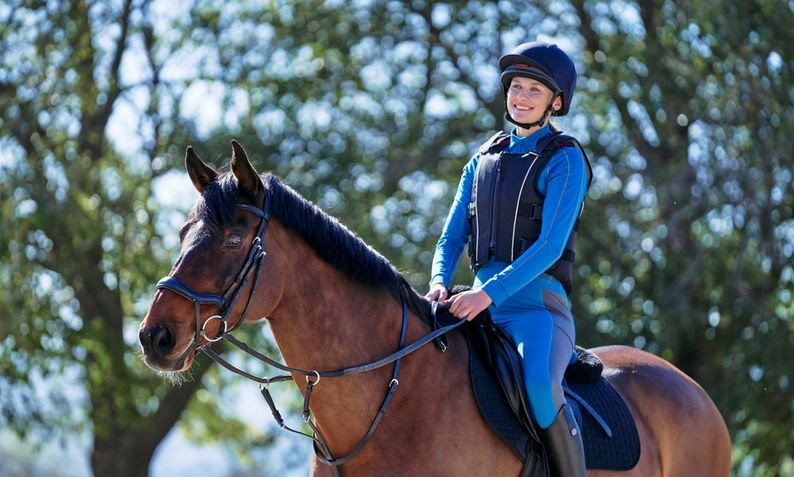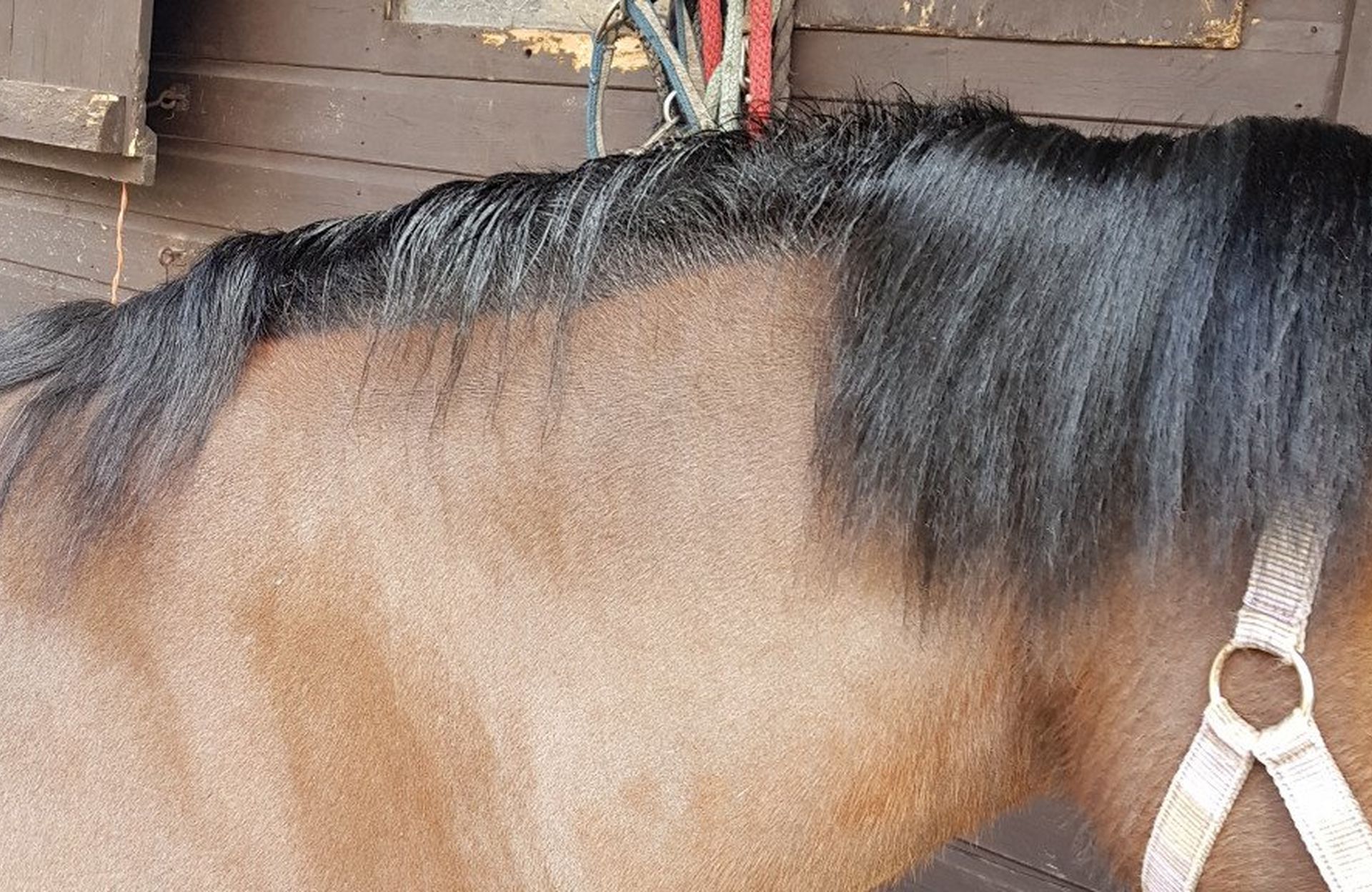
1. Find The Root Of The Problem
Rugs
Like humans, horses are also more receptive to being itchy when they are too hot. The most common cause of mane loss during winter is from a horse being too hot. During winter we usually use heavier rugs for our horse to keep them warm. However, if you are over-rugging your horse this may irritate their skin and cause a heat-rash - resulting in your horse to rub and scratch leading to mane loss / damage.
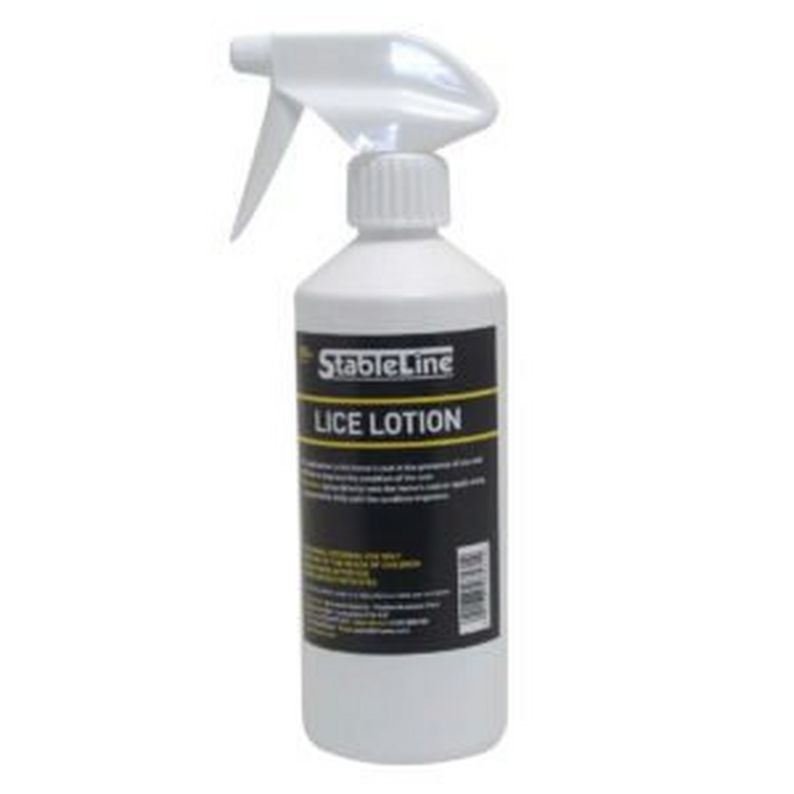
Lice
Another cause of a rubbed-mane is from mites and/or lice in your horses coat, feathers and mane. When the mites bite the horse’s skin, it irritates the horse and encourages them to itch to get rid of the soreness. If you suspect your horse has lice, use a lice treatment/shampoo to get rid of them and wash your horse’s belongings. Use StableLine Lice Lotion Spray RRP £9.50 to banish the lice!
A Clipped Horse
During winter many owners clip their horse to ensure they don’t sweat as much when rugged and when ridden, as their coats usually grow excessively during the colder months. Another reason many owners clip their horse is to encourage a clean and fresh coat re-growth for the new year. However, when a horse is clipped, things are easier to reach their skin and irritate them. Another reason your horse may itch after being clipped is they have been irritated by the clipping-oil or they have been cut slightly too short near the skin – causing a graze/irritation.
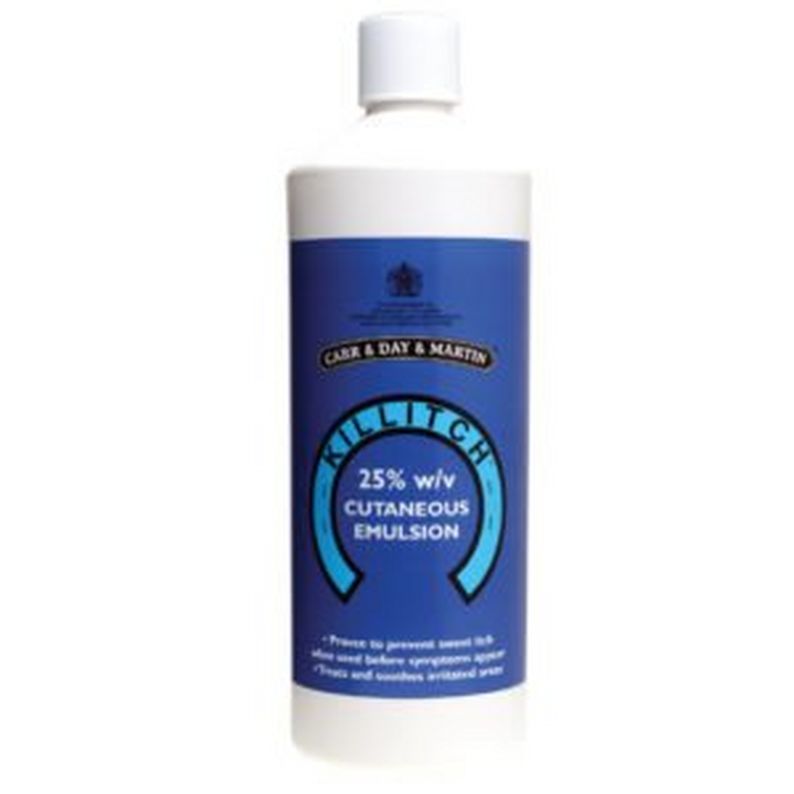
Not-So-Sweet.. Sweet-Itch
Sweet-itch is most common during during Spring and Summer when the temperatures rise, and is mild or non-existent throughout the colder months. Caused from flies and midges, sweet-itch is typically a seasonal condition, and so, mane loss during winter is rarely caused by sweet-itch. If however your horse is excessively itching their body and tail too – sweet-itch may be the culprit! Use Carr & Day & Martin® Killitch Lotion RRP 24.99 to ditch the itch!
You can read our blog ‘There’s Nothing Sweet About Sweet-Itch’ here for more information!
If your horse has previously suffered with sweet-itch during the warmer months, you may find they are itching during winter as their skin is healing. When the skin heals, it can sometimes be flaky and dry causing the skin to be itchy! Browse our sweet-itch selection here.
2. Choosing The Right Rugs
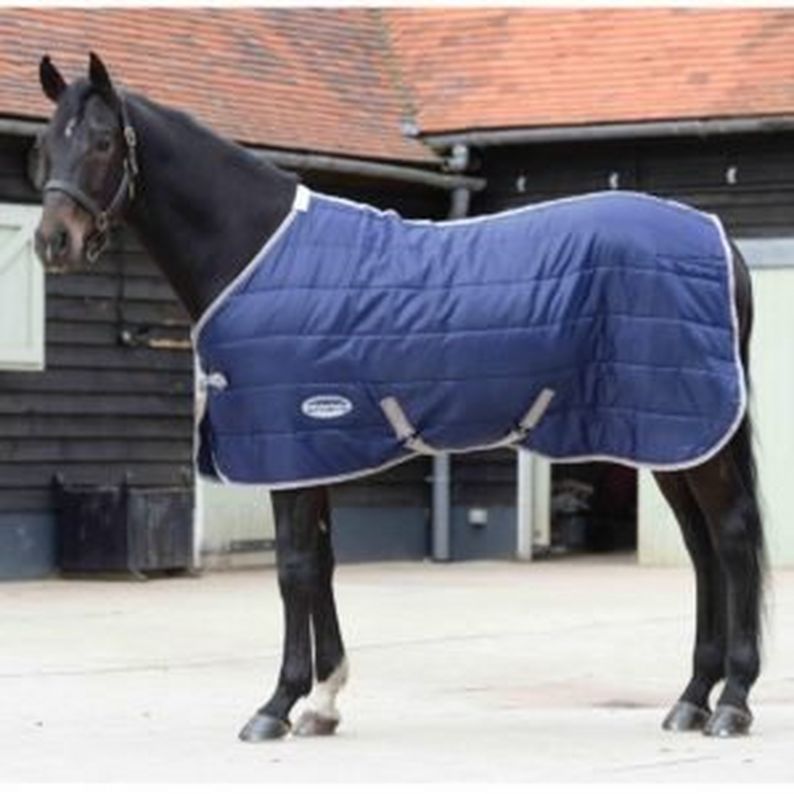
Choose a Standard Neck Rug Instead.
Like mentioned earlier, the most common cause of mane loss during winter is from over-heating typically caused by being over-rugged. This can lead to your horse itching their neck/mane. Many equestrians believe using a combo-neck rug will protect the horse’s mane from falling out, but this is not the case. A horse is more likely to itch and rub their mane when they have a combo-neck rug on.
If your horse needs a neck rug due to being clipped, you can either swap out the neck-piece for a lighter-weight option or only use overnight (or when necessary).
Check The Fit
A highly common factor to mane loss is from poor fitted rugs. If your rug is slightly to big, it may rise up the neck/mane causing further mane loss risks. However, should you rug be too small, it will sit too tightly and closely to the mane and higher the chances of rubbing against the mane. Ensure your rugs fit correctly to avoid mane loss this season.
Unsure how to measure or check the size of your rugs? Read our blog 'How to Measure Your Rug Correctly' here!
Avoid Using a Turnout Rug as a Stable Rug
Turnout rugs are designed to keep a horse dry when outdoors, meaning they lack the qualities that a stable rug typically provide. A main benefit of stable rugs is the inside quality of the rug. Many stable rugs have a polyester lining which is a material proven to improve the quality and condition of a horse's coat. This will keep the horse's mane in better condition and will avoid it rubbing and damaging the mane's condition.
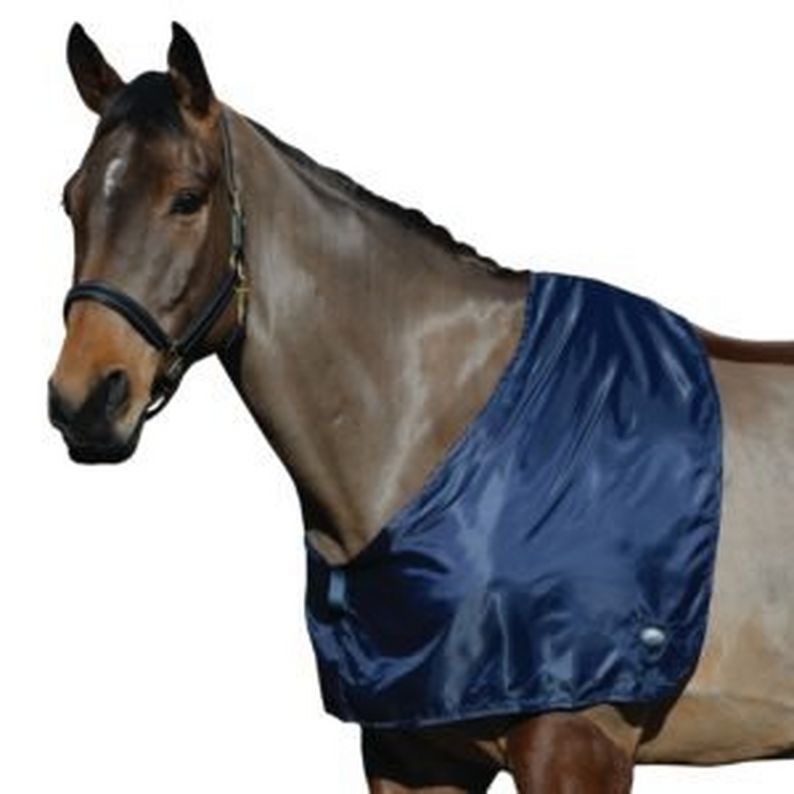
Use An Anti-Rub Bib
Designed to reduce the risk of your horse’s rugs rubbing at the mane. An anti-rub bib can be used in the stable or during turnout. They offer a wither guard to help minimise friction and rubbing from their rugs. A great option is the WeatherBeeta Satin Shoulder Guard RRP £7.99.
3. Nutrition – Feed and Supplements
If your horse is lacking nutrients, it may due to a mineral or vitamin deficiency it may delay regrow and reduce the condition of the mane. To encourage re-growth, try using some supplements jam-packed with goodness!
Another thing to check is the quality of hay/haylage they are eating. When you soak their hay/haylage, it can sometimes draw out the nutritional elements from the food. Finding high quality hay/haylage throughout winter can be difficult. This is because as crops and foliage is at it’s poorest. Therefore, using a nutritional supplement may be the best answer for upping their nutrition.
Browse our supplements Here.
Browse our feed Here.
4. Get Plaiting!
A great way to keep your horse’s remaining mane from occurring more damage is by keeping them in plaits. This may be difficult for those with very sparse manes, but try to work with what you’ve got! For the areas of the mane that are unable to be plaited, we suggest to not brush or comb the hair. As hard as this may be (and as messy/scraggly this makes the mane) it reduces the amount of hair to fall out and reduces scalp damage too.
5. Avoid This When Riding…
For many riders, it is common for them to rest their hands on a horse’s neck. Whether this is because you’re a riding newbie, you’re on a relaxing hack or your holding onto the mane whilst jumping. If you find your horse’s mane is thinning or falling out, try to reduce to amount of contact with the mane as possible.
6. Mane Conditioning Products
Using products for your horse’s mane will improve the quality of the mane from root to tip. Keep your horse’s mane in great condition to reduce damage and fall-out! When you use mane conditioning products, avoid excessively brushing the mane. You could perhaps use your fingers instead for a more gentle-touch.
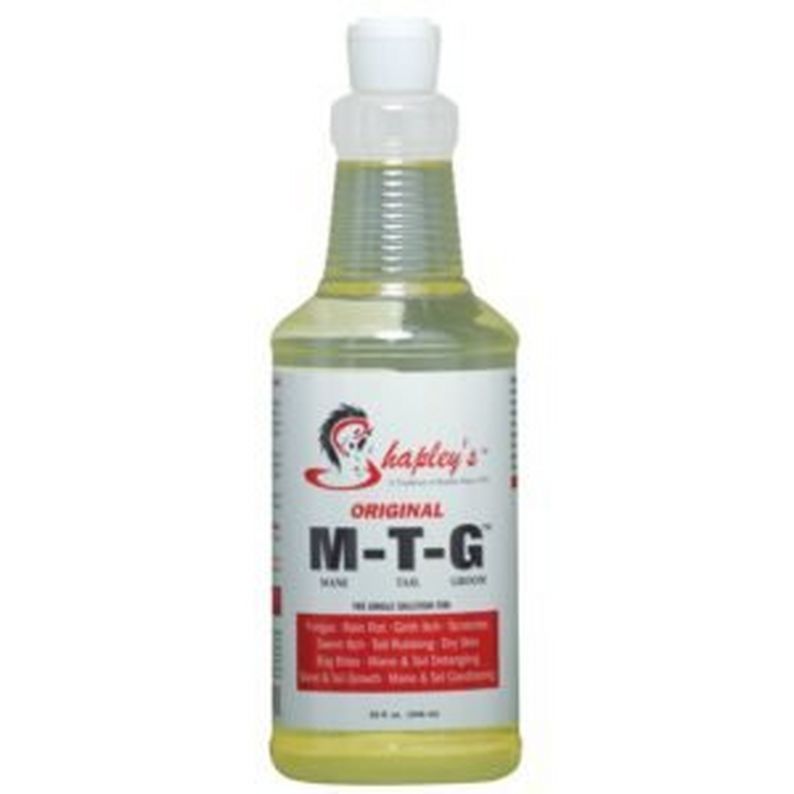
A product designed to encourage hair growth is the Shapley’s Original M-T-G Treatment. Designed to target mane and tail growth, mane and tail conditioning, scratches, dry skin and much more! Shapley’s M-T-G is a tackroom staple for all horses this rubbing-season!

Another great product to use for this dreading season of mane loss is the fantastic Leovet No Rub treatment. Leovet No Rub is a highly effective lotion that can help reduce the itching of manes and tails and leave them dandruff free. Leovet No Rub contains Willow bark to renew the skin and assist in the normal peeling process.
7. No Grease, No Loss!
During the colder seasons, it is difficult for us to bath and clean our horses, and sometimes our elbow grease doesn’t always cut it when it comes to removing dirt and grease. When grease builds up in our horse’s mane, it can block the hair follicles on the neck reducing the chances of the mane to grow back. Although we don’t suggest giving your horse a full bath in this weather, we suggest giving their mane a wash only on a mild day. Use warm water, a gentle shampoo and your finger to rub the root of the mane. Voila!
You may find your turnout and stable rugs also have a build up of grease on the inner-lining. Try to regularly wash your rugs to keep the grease at bay!
8. Remove The Neck-Rubbing Source

If your horse’s mane is falling out from them rubbing it against a post or their stable we recommend finding a way to eliminate things they can use to itch their mane/neck. However, eliminating a stable wall may be quite difficult, so instead why not try to add an Anti-Weave top door grid during winter?
This only gives them room to pop their head out of a narrow gap and so will make it difficult for a horse to twist and scratch their neck against it.
Use cross-ties leadropes when tying your horse up to prevent them from be able to twist and turn their head to scratch against the wall or post.
9. Avoid Other Horses Grooming Your Horse
This may be the most difficult step to abide by if your horse is turned-out with other horses. When horses groom eachother they usually muzzle around the lower neck and withers. Therefore, another way to avoid your horse’s hair to get brittle and damaged is by preventing your horse grooming with other horses. To do this, use a fly spray around their withers so other horse’s avoid the mane area!

